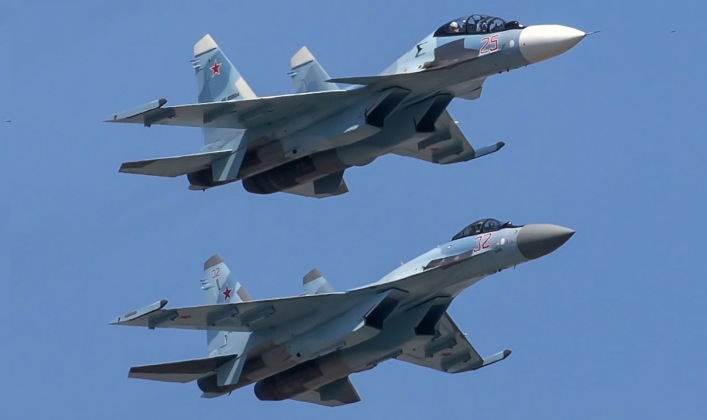The Russian Air Force has reportedly taken delivery of its first Su-30SM2 heavyweight fighters, which represent the first new Su-30 variant to enter service in over a decade and provide significant improvements over the prior Su-30SM design. Anticipated for close to a decade, the fighter integrates the same AL-41F-1S engine as that used by the Su-35S which provides a much improved thrust to weight ratio and greater fuel efficiency for a superior flight performance and higher endurance. The new engine improves commonality among Russian air units which will ease logistical burdens, and also has lower maintenance requirements and a much extended service time between overhauls which are likely to translate into higher availably rates for the aircraft. The Su-30SM had used the much older AL-31FP, a close derivative of the Soviet AL-31F used to power the original Su-27 Flanker aircraft from 1985 which added thrust vectoring capabilities to the design. The AL-41 used by the SM2 variant has 16 percent more thrust, which allows the fighter to take off with a larger weapons payload. Alongside its new engine, the Su-30SM2 also integrates a new radar although conflicting reports indicate this could be either the Su-35’s Irbis-E or the less capable N011M Bars-R. Whichever radar is used will reportedly provide the fighter wit the ability to use Kh-59 standoff missiles and a range of new guided bombs previously not available to the standard Su-30SM.

All Su-30 fighters produced after the 2000s have been manufactured at the Irkutsk Aviation Plant, with the second Su-30 production line at the Komsomolsk-on-Amur Aircraft Plant having converted to producing the Su-35S. The Su-30SM’s design was based on the Su-30MKI, which was developed for the Indian Air Force and entered service from 2002, but benefitted from significant improvements to avionics, sensors and weaponry including access to the new R-37M air to air missile. Russia reportedly intends to offer the Su-30SM2 upgrade package to operators of the same family of Flanker jets, most notably India, Algeria and Malaysia but also potentially more recent clients such as Kazakhstan, Belarus and Armenia. The Russian Military also plans to bring its fleet of over 100 Su-30SMs up to the SM2 standard. The first order for an estimated 24 Su-30SM2s was placed in August 2019, with both the Air Force and Navy expected to operate the new fighter class.
Su-30SM2s in the Navy will reportedly be deployed to Kaliningrad, one of Russia’s most heavily fortified territories on the frontier with NATO, where they will replace ageing Su-27s. It remains uncertain how many more Su-30s the Russian Defence Ministry plans to purchase, however, with numbers planned having increased greatly largely due to delays in beginning serial production of the new Su-57 fighter which entered service over five years behind schedule. The numbers built for domestic use are expected to depend largely on quantities of foreign orders and the extent domestic orders are needed to keep the Irkutsk plant’s production line open. It is expected that all Su-30s produced in future will be Su-30SM2s before production is finally closed later in the decade possibly as facilities convert to opening a second Su-57 production line.
